Highly Trained Specialists
Our highly trained specialists will stop the problem at the source. Also, we will implement preventative measures to ensure that the house flies won’t return to annoy you or risk your health.
Speak With An ExpertEco-Friendly Fly Control Solutions
We don’t use harmful chemicals that will do more damage than good. For example, strong insecticides may eliminate the flies but also disrupt the micro-ecosystem in your yard or garden.
We will devise an Integrated Pest Management program that will resolve the problem while simultaneously protecting the earth. But, more importantly, our proven preventive measures will minimize the chances of these flies returning to bother you.
Eco-Friendly Pest Control
Eastern Pine Pest Control uses Eco-Friendly strategies to seek to use the least toxic method first. There are some very effective natural
Safe & Effective Methods
Friendly & Professional
Flies We Cover
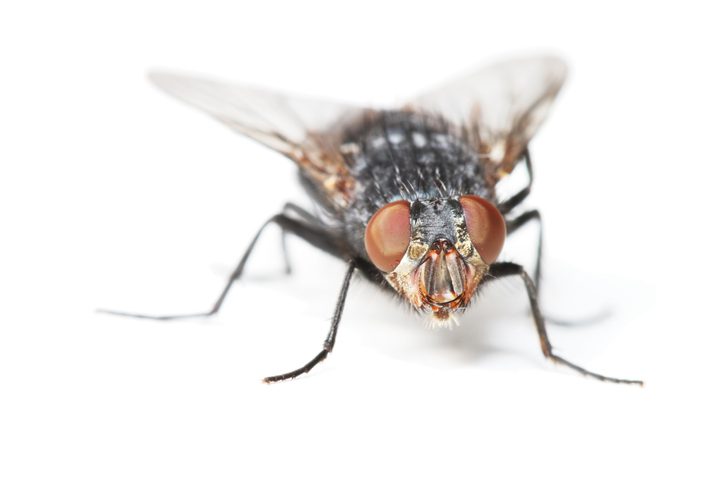
Of course, nothing in nature is accidental. No matter how much you hate them, flies have an important role to play as a food source for other insects and amphibians. They also act as pollinators.
With that said, house flies can multiply quickly, and a decent number can rapidly lead to an infestation. People who live near livestock or poultry always deal with this problem.
According to the educational organization Penn State Extension, house flies may be responsible for at least 65 fatal diseases, including the following:
- Typhoid fever
- Dysentery
- Cholera
- Poliomyelitis
- Yaws
- Anthrax
- Tularemia
- Leprosy
- Tuberculosis
You need to nip the problem in the bud if you see house flies hovering around your home or place of business.
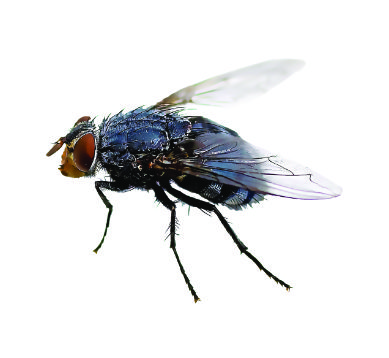
Black flies, also known as buffalo gnats or turkey gnats, are small insects belonging to the family Simuliidae.
Habitat – They are found in various habitats around the world, including near rivers, streams, and other bodies of water.
Diet – Black flies have aquatic larvae and require clean, flowing water for their development. As adults, they feed on the blood of mammals, including humans, birds, and livestock. Their bites can be painful and cause discomfort, as well as potential allergic reactions in some individuals.
Appearance – Black flies are known for their small size, typically measuring around 1 to 5 millimeters in length. They have dark-colored bodies, often black or dark brown, with broad wings and short antennae. Their appearance is characterized by a humpbacked posture and hunched thorax.
While black flies are important components of aquatic ecosystems, their nuisance-biting behavior can pose challenges for outdoor activities near their habitats.
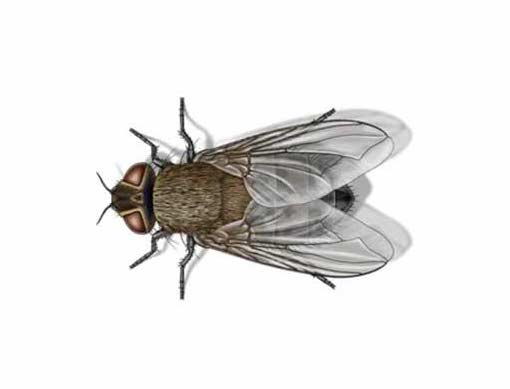
Cluster flies are significantly larger and sometimes appear green, with golden hairs protruding from its body. Their larvae come from the earthworms, which serve as the host of these parasites.
However, there’s no documented case of human disease associated with cluster flies.
Like the common house flies, however, cluster flies can become a nuisance really fast. For instance, they leave their mark by imprinting their excrement on your windows and walls.
You will see them in your home in the summer or early spring since they hibernate throughout winter.
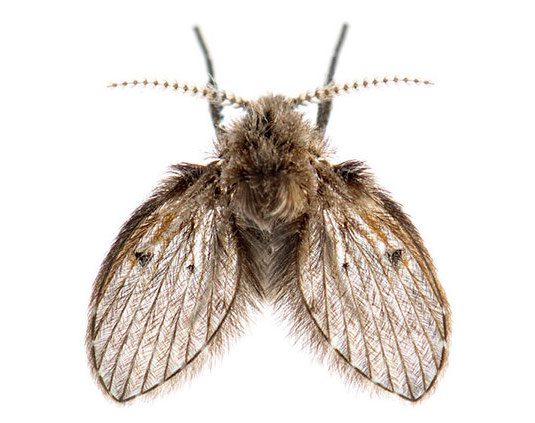
Habitat – Drain flies, also known as moth flies or sewer gnats, are small insects found in various habitats worldwide.
They are commonly found in damp and moist areas such as drains, sewers, and stagnant water sources.
Diet – These flies have a diverse diet, feeding on decaying organic matter, sewage, and algae.
Appearance – Their appearance is characterized by a small size, typically measuring about 2 to 5 millimeters in length. They have fuzzy bodies and wings covered in hair-like structures, giving them a moth-like appearance. Drain flies are usually light gray or brown in color, and they have a unique pattern of veins on their wings.
While they may seem harmless, their presence can be an indication of underlying plumbing issues or hygiene concerns, making proper control and prevention measures important.
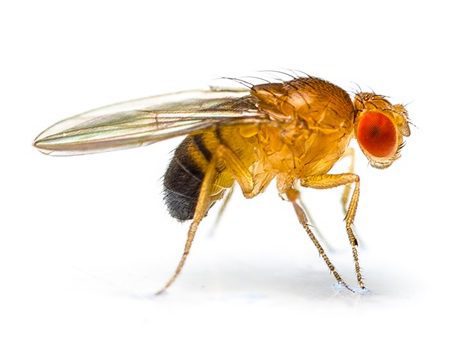
Fruit flies, scientifically known as Drosophila melanogaster, are tiny insects that belong to the family Drosophilidae. They are widely distributed and commonly encountered pests in homes, grocery stores, and fruit orchards.
Diet – These flies are attracted to overripe and rotting fruits, vegetables, and other fermenting organic matter, hence their name.
Habitat – Their habitat is often associated with areas where these food sources are present, such as kitchens, garbage bins, and compost piles. Fruit flies are incredibly small, measuring about 2 to 4 millimeters in length.
Appearance – They have a distinctive appearance, featuring red eyes, a tan or light brown body, and translucent wings with prominent veins.
Their ability to reproduce rapidly and their fondness for sugary substances make them a nuisance in households, but their short lifespan of about two weeks helps limit their overall impact. Proper sanitation, sealing of food containers, and prompt disposal of ripe or decaying fruits are effective ways to manage fruit fly infestations.
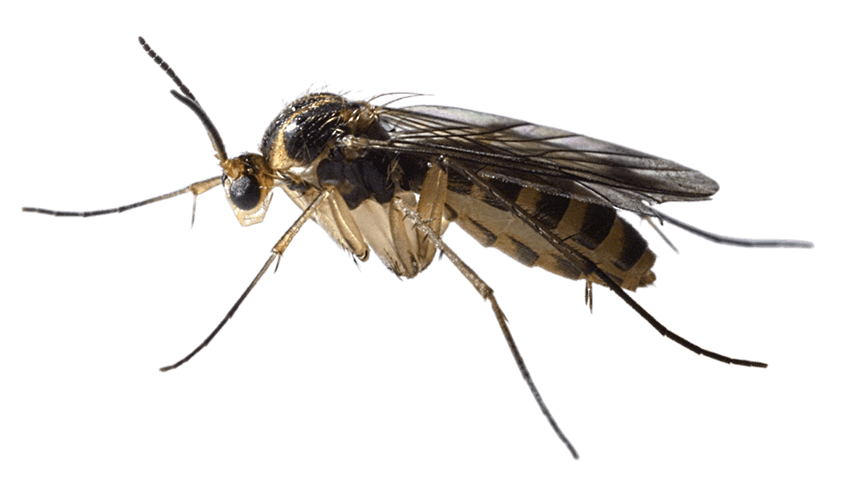
Fungus gnats, scientifically known as Sciaridae, are small insects that belong to the fly family Sciaroidea.
Habitat – These gnats are commonly found in damp and humid environments, particularly in areas with decaying plant matter and organic-rich soils. They thrive in houseplants, greenhouses, and gardens where the soil remains consistently moist.
Diet – Fungus gnats have a diet that primarily consists of fungi, decaying plant material, and organic debris. They are attracted to moist soil and feed on the fungi that grow on decomposing organic matter.
Appearance -In terms of appearance, fungus gnats are typically tiny and slender, measuring about 2 to 5 millimeters in length. They have dark-colored bodies, long legs, and delicate wings that are often held in a characteristic “V” shape at rest.
These pests can become a nuisance in indoor environments, especially when their population grows and they start to swarm around potted plants. Proper watering techniques, allowing the soil to dry out between waterings, and maintaining good plant hygiene can help prevent and control fungus gnat infestations.
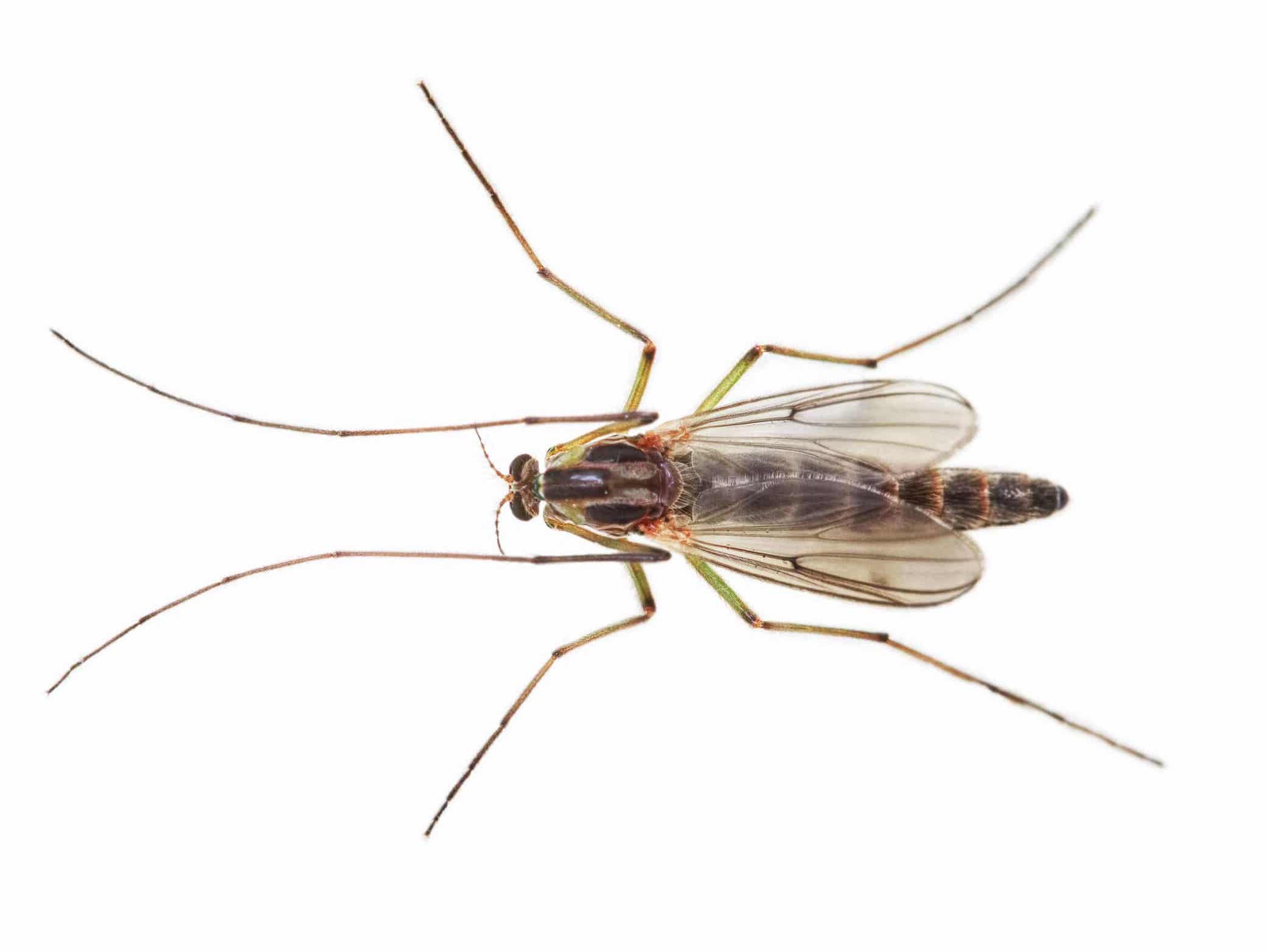
Midges, also known as chironomids or non-biting gnats, are small flying insects that belong to the family Chironomidae. They are widespread and abundant in various aquatic and terrestrial habitats around the world.
Habitat – Midges can be found near bodies of water such as lakes, ponds, rivers, and wetlands, as they rely on water for their life cycle.
Diet – These insects have a diverse diet depending on their life stage. Larval midges feed on algae, organic debris, and microorganisms present in the water, while adult midges primarily feed on nectar and other sources of plant sugars.
Appearance – In terms of appearance, midges are typically small, delicate insects with slender bodies. They often resemble mosquitoes but lack the elongated proboscis for blood-feeding. Adult midges have long, slender legs and two pairs of wings covered in fine hairs. Their colors can vary from black or gray to brown or even iridescent shades.
Midges are important components of freshwater ecosystems, serving as a food source for fish and other aquatic organisms. However, their swarms in certain seasons and locations can be a nuisance to humans, though they do not bite or transmit diseases.
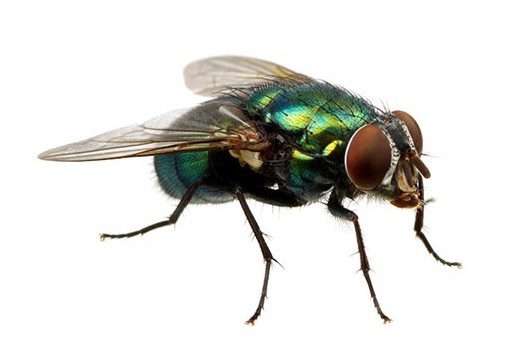
Blow flies, scientifically known as Calliphoridae, are a family of flies that play a vital role in the ecosystem as decomposers.
Habitat – They are commonly found in a wide range of habitats worldwide, particularly in areas with decaying organic matter such as carrion, animal feces, and garbage. Blow flies are attracted to these sites as they provide a rich source of food for their larvae.
Diet – Their diet consists of decaying flesh, which they locate through their keen sense of smell. These flies are often the first to arrive at carcasses, aiding in the process of decomposition.
Appearance – In terms of appearance, blow flies are medium to large in size, with metallic or shiny bodies. They can range in color from metallic blue, green, or bronze to black. Blow flies have large compound eyes and a distinct hump on their thorax.
They are strong fliers and can cover significant distances in search of suitable food sources. While blow flies may be associated with unsightly situations, they serve an important ecological role by hastening the breakdown of organic matter and assisting in nutrient recycling.
